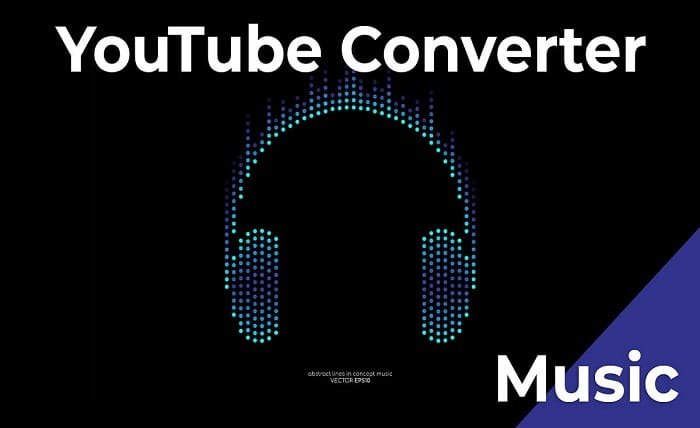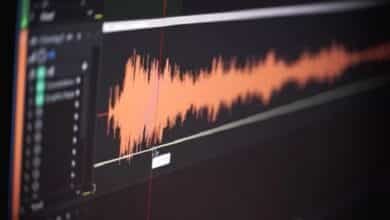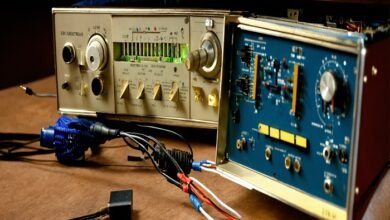You Need to Know About 8D Audio Converter: A Complete Guide

The 8D audio converter has taken the world by storm, offering a unique and immersive way to experience music. By using specialized software, an 8D audio converter can transform regular stereo tracks into an audio experience that feels like the sound is moving around the listener. This captivating effect is achieved by manipulating the audio frequencies and adding spatial effects. In this blog post, we will explore the world of 8D audio converters, how they work, the best tools available, and how you can create your own 8D audio tracks.
What is an 8D Audio Converter?
An 8D audio converter is a software or tool that allows you to transform traditional audio into a three-dimensional experience, making it feel like the sound is moving in all directions around the listener. This technology is built on binaural audio principles, where sound is manipulated using different frequencies, delays, and spatial positioning techniques. The 8D audio converter adds a unique depth to the listening experience, making it especially popular in the music industry. By utilizing an 8D audio converter, artists and producers can enhance their tracks with this immersive effect, providing listeners with a fresh and exciting audio experience.
The 8D audio converter takes ordinary stereo tracks and applies spatial effects, panning, and reverb to give the listener the sensation that the music is moving in a circular or spherical motion. For this reason, many listeners enjoy using headphones when listening to music created with an 8D audio converter, as the effect is more pronounced and realistic.
How Does an 8D Audio Converter Work?
An 8D audio converter works by manipulating the audio’s spatial properties to create a binaural experience. This is done through panning and other sound effects that simulate movement. The key to an 8D audio converter’s function lies in how it uses stereo channels. Instead of keeping audio confined to the left and right speaker outputs, the converter alters the direction and position of the sound. This gives the impression that the sound is traveling in three-dimensional space.
When using an 8D audio converter, the software often adds reverberation, echo, and modulation to further enhance the immersive experience. The listener will feel as if they are surrounded by the sound, which is a signature trait of 8D audio. In many cases, the 8D audio converter also makes adjustments to the equalization of the track, emphasizing certain frequencies to create depth and movement.
Benefits of Using an 8D Audio Converter
The use of an 8D audio converter provides several benefits for both creators and listeners. For musicians and producers, it offers a way to stand out in the crowded music space by creating unique and memorable listening experiences. The 8D audio converter allows for creative expression, enabling artists to push the boundaries of how their music is perceived.
For listeners, the 8D audio converter enhances the enjoyment of music by providing an immersive experience that makes them feel like they are inside the music. The effect is especially popular among fans of electronic music, where the spatial effects can complement the intricate beats and melodies. Another benefit of using an 8D audio converter is its versatility; it can be used to convert any genre of music into an immersive experience.
Best 8D Audio Converter Tools and Software
If you’re looking to experiment with creating 8D audio, there are several 8D audio converter tools and software options available to get you started. Each 8D audio converter comes with its unique features and functionalities, catering to different levels of expertise.
- Audacity: Audacity is a free and open-source audio editing tool that can be used as an 8D audio converter with the right plugins. It offers advanced features for sound manipulation, such as panning, reverb, and equalization, making it a great choice for creating 8D audio.
- FL Studio: A popular digital audio workstation (DAW) used by professional music producers, FL Studio can also function as an 8D audio converter. The software allows users to apply spatial effects and automate panning to create the 8D effect.
- Adobe Audition: Adobe Audition is another powerful tool that can be used as an 8D audio converter. With its advanced audio manipulation capabilities, users can easily create professional-quality 8D audio tracks.
- 8D Audio Converter Online Tools: For those who don’t want to download software, there are also several online tools that act as 8D audio converters. These tools typically allow users to upload a track and apply 8D effects in just a few clicks.
How to Create 8D Audio Using an 8D Audio Converter
Creating 8D audio with an 8D audio converter is easier than you might think. Whether you’re a professional musician or an enthusiast looking to experiment with sound, the process is simple and rewarding. To start, you’ll need a stereo track and an 8D audio converter tool of your choice.
First, import the stereo track into your chosen 8D audio converter software. Next, apply spatial effects, such as panning automation, which moves the sound from left to right and creates the perception of movement. Most 8D audio converters will also allow you to adjust the reverb, delay, and echo to further enhance the three-dimensional effect. Once you’re satisfied with the result, export the track as an 8D audio file.
Using an 8D audio converter to create your own tracks can be a fun and creative way to explore sound. You can experiment with different settings to find the perfect combination of effects that brings your music to life in a three-dimensional space.
Why 8D Audio is Popular Among Listeners
The popularity of 8D audio has grown rapidly, and much of this can be attributed to the unique listening experience it provides. By using an 8D audio converter, listeners can immerse themselves in a track and feel as though the sound is swirling around them. The sensation created by an 8D audio converter is especially compelling when listening through headphones, which enhances the spatial effects.
For many listeners, using an 8D audio converter adds a new dimension to their favorite songs, offering a fresh way to experience familiar music. The calming and almost hypnotic effects of 8D audio, made possible by an 8D audio converter, are why it has become so popular across various genres, particularly electronic, ambient, and experimental music.
Future of 8D Audio and 8D Audio Converter Technology
As technology continues to advance, the future of 8D audio and 8D audio converter tools looks promising. More artists are adopting 8D audio converters to enhance their music, pushing the boundaries of what can be achieved with sound. With the rise of virtual and augmented reality, the demand for immersive audio experiences is expected to grow, making the 8D audio converter a crucial tool for future audio production.
Additionally, as more listeners seek out new ways to engage with music, the 8D audio converter will likely continue to evolve, offering more advanced features and greater accessibility for users of all levels. The ongoing innovation in the field of 8D audio means that the converter tools available today may just be the beginning of a much larger trend in immersive audio.
Conclusion
The 8D audio converter represents a fascinating step forward in audio technology, transforming how music is experienced by listeners. By using specialized tools, the 8D audio converter creates a three-dimensional soundscape that moves around the listener, providing an immersive and unique audio experience. Whether you are a musician looking to innovate or a listener seeking new ways to engage with music, the 8D audio converter opens up endless possibilities for creative expression. As technology continues to advance, the 8D audio converter will likely become an even more integral part of the music industry, shaping the future of audio experiences.
FAQs
1. What is an 8D audio converter? An 8D audio converter is a tool that transforms regular stereo audio into a three-dimensional experience by manipulating sound to move around the listener.
2. How does an 8D audio converter work? An 8D audio converter works by adjusting stereo channels, panning, reverb, and other spatial effects to create a sense of movement and immersion in the sound.
3. Can I create 8D audio with any track? Yes, you can convert almost any stereo track into 8D audio using an 8D audio converter. However, the quality of the conversion depends on the original track and the converter used.
4. Is 8D audio only effective with headphones? While 8D audio can be enjoyed on regular speakers, the full immersive effect created by an 8D audio converter is best experienced with headphones.
5. Are there free 8D audio converter tools available? Yes, there are free 8D audio converter tools available, such as Audacity with plugins, as well as online converters that allow you to create 8D audio without downloading software.




